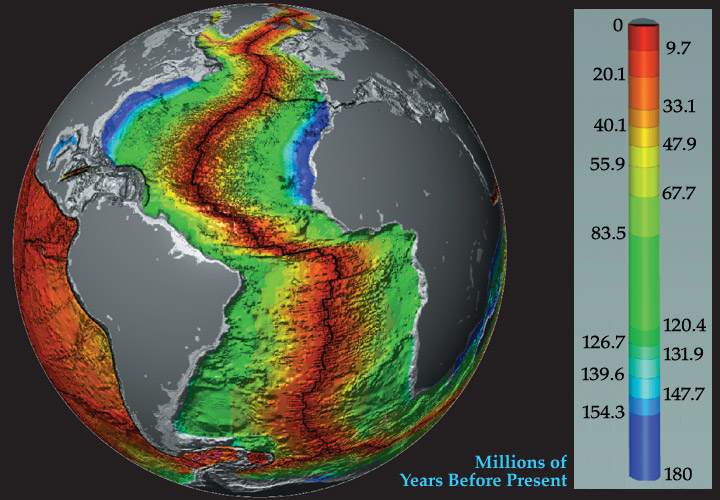"As probably most here know, one of the anchoring principles used in assigning dates within uniformitarian geology (and acting as an enabler for the hypothesis of evolution) is called radiometric dating."
You've already demonstrated that you aren't familiar with the science of geology, and are in no credible position to challange geologists. Your words are nothing more than baseless claims.
@NobleMouse
If you disagree, perhaps we can pull quotes from prior discussions demonstrating your lack of familiarity with the science.
The truth is that, the earth was established as being far older than 6,000 years, hundreds of years before radiometric dating was even discovered. Radiometric dating is more of a form of confirmation, than it is an "anchor" in recognizing an old earth.
For example:
The problem of the Green River Formation
Here is one of many topics discussing uniformitarian geology.
Young earth beliefs are incapable of explaining even single individual formations, let alone entire sequences of rock.
The problem of the Green River Formation
Early scientists recognized the expanse of individual rock types and formations, that individually would take hundreds of thousands if not millions of years to form, individually. Given that individual formations such as the green river formation, really only make up a small percentage of the geologic succession (maybe 1%), young earth beliefs cant even account for the smallest of fractions of earths geology.
The founding fathers realized this hundreds of years ago (1700s) and established uniformitarianism.
It wasn't until the 1900s that radioactive dating entered the picture, in which radioactive dating was discovered and was realized to coincide with uniformitarianism.
For example:
If we look at continents today, they migrate at what is perhaps 5cm or so, per year. In some cases a little more, in some cases a little less.
If we measure the distance between the mid oceanic ridge and the east coast of north america, we get a number of cm around ~350,000,000 cm (depending on what part of the ridge you measure from).
If uniformitarianism is true, that would mean that at a rate of 5cm per year, the oldest rocks of the ocean should be somewhere in the ballpark of 70 million years old.
Here comes radioactive dating.
Hey, how about that. Radioactive dating actually provides results that match what we already knew based on uniformitarian geology. Most rocks along the edges of continents on either side of the mid oceanic ridge, date somewhere in that ballpark of 80 to 100 million years, depending on where you measure.
The oceanic ridge is closer to south america than north america, and so it should also follow that you have older rocks along the north american coast than south american. And so it is.
------------------------------------------------------------------------
So back to the original point. Radioactive dating, really is just complimentary to what was already established as an earth that is millions of years old. The established old age being a product of simple geologic principals such as...the law of inclusions, superposition, lateral continuity, original horizontality, cross cutting relations and more. These laws being really basic and fundamental concepts grounded in logic.
For example, original horizontality suggests that layers originally should deposit horizontally. Because of gravity. And any tilted layers beyond such, are a product of actions acting upon bedrock, after it has already been deposited and lithified.
Or the law of cross cutting relations. A fault or dyke which cross cuts a layer of rock, must post-date the rock at which it cross cuts. Else the features would be cross cutting empty space and wouldnt be cross cutting anything at all.
Or the law of inclusions. Clasts which are included in the matrix of another body, must post date its matrix, else it would be included in empty space and wouldnt be called an inclusion at all.
Simple, logically justified, supported by the evidence.


